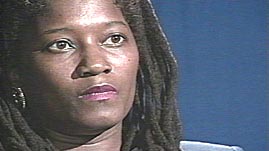Miriam McClendon was born in 1949 in the Wenonah mining camp, near
Birmingham, Alabama. She grew up under strict segregation; separate
facilities for black and whites, from water fountains to classrooms,
were sanctioned by law. Moreover, segregation was often enforced with
violence and police brutality. During the Civil Rights movement,
activists were beaten and sometimes murdered. Local police offered no
protection. In fact, the city was nicknamed "Bombingham" for
the numerous bomb attacks on African Americans.
McClendon's family discussed race very little at home, but in high
school McClendon attended a civil rights mass meeting with her mother
and embraced the struggle for racial equality. Speeches by civil rights
leaders such as James Bevel and Martin Luther King Jr. challenged the
unequal status of blacks and whites and inspired her to take action,
even though she was only 14.
On May 2, 1963, civil rights leaders led Wenonah High School students on
a seven-mile march to the Sixteenth Street Baptist Church in nearby
Birmingham. McClendon and a hundred other students marched to the
church, the staging area for the demonstrations, where they joined
students from schools in other parts of the city. There the students
were organized into protest groups and spent the next four days
demonstrating against discrimination in Birmingham.
Police Commissioner Eugene "Bull" Connor tried to stop the
demonstrations with police dogs and fire hoses. The hoses had enough
pressure to blow the bark off a tree or roll a child down the street,
and they did. But the marches continued. McClendon's group was assigned
to picket a store, where they were arrested and put in jail. By May 6,
approximately 2,000 children were arrested and jailed in what came to be
known as the Children's Crusade.
National news coverage stunned the public with images of the violence in
the streets of Birmingham. President John F. Kennedy was forced to take
action. For the first time, he declared civil rights a "moral
issue" and began drafting federal legislation that would protect
the rights of African American citizens. The resulting Civil Rights Act
of 1964 outlawed segregation and discrimination in all public facilities.
In 1965, McClendon attended Miles College. There, she met Stokely
Carmichael. who advocated a more aggressive approach to racial equality,
even black militancy. McClendon started a campus newsletter that
reported news and provided information about the Civil Rights movement.
The newsletter decried faculty who did not support the students' efforts
and nominated them for the "[Uncle] Tom of the Week Award,"
implying that passivism effectively supported segregation.

 Loading Standards
Loading Standards